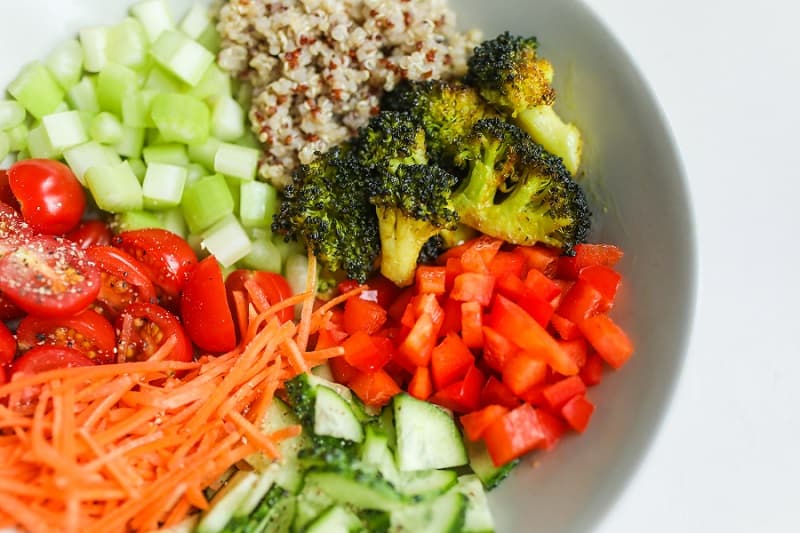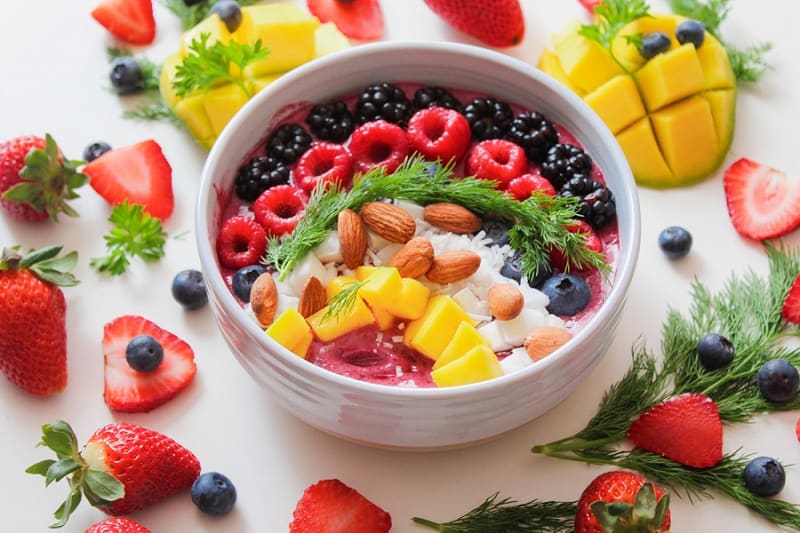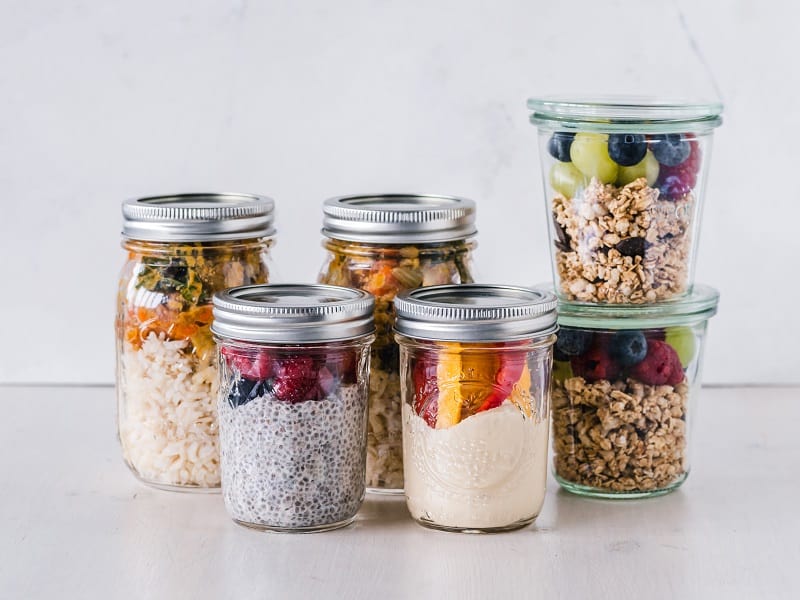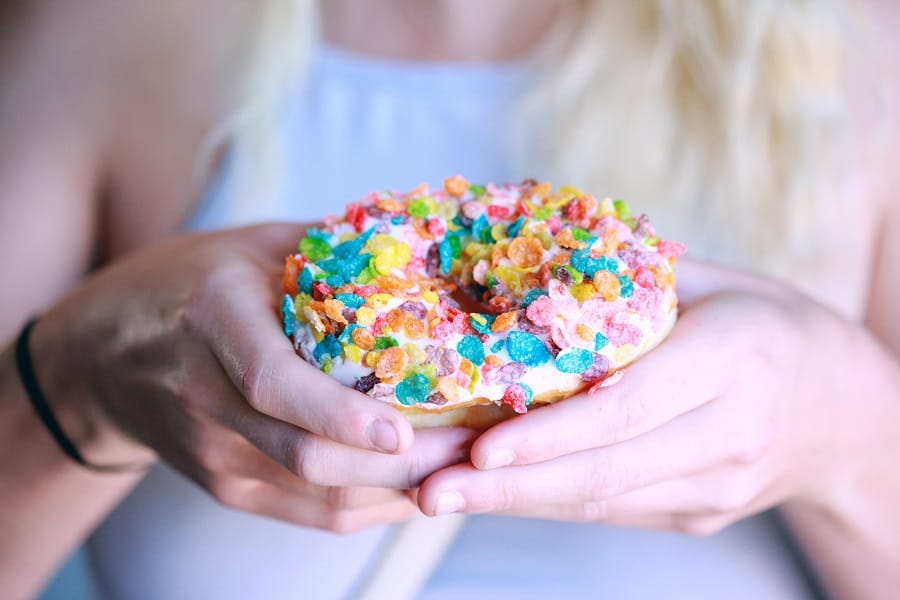One of the less commonly discussed benefits of a plant-based diet is its ability to reset maladaptive binge cycles that originate from food addictions. With a background in psychology and an ongoing interest in nutrition, I have been exposed to a breadth of helpful research on this topic that I am excited to share with you!
A plant-based diet can treat food addiction and binge eating by re-calibrating the neuroadaptations created by hyper-palatable foods like soda, candy, pizza, cheeseburgers, and ice cream. It takes, on average, 30 to 90 days to readjust your mind and your taste buds to natural foods.
Food addiction can be just as detrimental to your health as drug addiction. I have an easy drug-free step-by-step solution to this all too common problem.
Addiction & how it pertains to food
People may not consider the possibility of full-blown food addiction, but it is a very real predicament that impacts a large number of individuals.
An addiction to food may not be as serious or as extreme as drug addiction, but it has many of the same underlying neurological and behavioral implications.
Food addiction may encompass some or all of the following criteria:
- A tolerance can be built
- Withdrawal is experienced when attempting to cut back, or quit
- A lot of time and energy may be spent seeking out and eating food
- Overindulgence may lead to financial, emotional, and physical consequences
- One continues to eat a given food even though they recognize it is harmful
- Continued use may impact social, recreational, and occupational circumstances
- An inability to quit
There is an unfortunate stigma that may be experienced by those who suffer from food addiction in part because some people may refuse to acknowledge it as an actual disorder because we are meant to eat food.
Suffering from food addiction is real and distinguishable from normal eating patterns. Binge eating is an example of a disordered eating pattern brought on by maladaptive dietary preferences.
“Maladaptive” simply means that you are trying to solve a problem, but perhaps going about it in a dysfunctional way.
This relates to food driven disorders in that you are trying to solve the problem of constantly giving in to cravings for artificially rich food substances. The maladaptive resolution results in over-eating or binge eating on foods that tend to contain a large amount of salt, sugar, and/or fat.
Addiction of any kind is only experienced by a small percent of the population. This entails that some individuals are predisposed or prone to addiction, which is why some people can get away with using these substances in moderation while others cannot.
I recommend getting rid of the “moderation” concept altogether. Teasing yourself with just a little bit of a highly-palatable food will only lead to binges or feelings of shame and disappointment. It’s actually easier to go all-in vs playing around with moderation.
The dopamine response
Addiction is a modern maladaptive response to substances that were never meant to be part of our environment. Scientists believe that addiction is a signaling system that has gone awry due to the creation of man-made artificially concentrated substances.
The thought is that addiction is a normal response to abnormal stimuli.
For instance, when you satisfy your hunger with natural foods, a small amount of dopamine is released to create feelings of wellness to signal to the system that you have done something beneficial to increase your likelihood of survival. In turn, this will increase the likelihood of the behavior occurring again, and again.
When you satisfy your hunger with foods containing abnormally high concentrations of things like fat, sugar, and salt your brain releases an abnormally high amount of dopamine to signal that you are moving in the right direction and you should eat more of this substance.
Our brains are working against us in this manner because foods containing natural amounts of fat, sugar, and salt tend to have a high amount of calories, which is great for your survival when you are battling starvation.
In our modern world, however, most of us will never have a shortage of calories. And thus, we must constantly be working against our instinctual drive to consume the most accessible and highest calorically dense foods in our environment.

The Dilemma: A major disconnect between our biology & our environment
Our brains have evolved over thousands of years, but yet they retain a lot of the same fundamental faculties. For instance, our taste receptors are still designed to pick up on subtle flavors in natural foods like rice, beans, and broccoli, just as they have been since we were cave men.
Today, however, we are bombarded by an environment full of unnatural, highly stimulating food substances that are creating unnatural problems with our weight, health, and psyche.
People in almost all developed countries are seeing higher rates of obesity, diabetes, and heart disease since the advent of processed foods and factory farms.
What is most interesting is that most people are fully aware of the harms caused by these unnatural foods, but they continue to consume them anyway. That is the power these hyperstimulating substances hold over our pleasure centers.
We are making poor decisions against our better judgement simply to experience that brief dopamine kick.
Dr. Barnard reveals that the parallel between food and drug addiction is so great that a chocolate addict’s cravings can be reduced by Narcan, which is a medicine used to treat opioid overdoses.
Our systems were not designed to overcome problems with the overabundance of artificially rich food substances. You will never see someone binge uncontrollably on carrots and celery sticks because our neuro-feedback mechanisms respond to these foods at a natural firing rate.
The short video below does a great job of explaining the science behind food addiction and how it’s closely linked to foods with high caloric densities, such as milk shakes, cheese, and hamburgers.
What is binge-eating?
Binge eating is something everyone does on occasion for one of two reasons:
- We simply do not have access to food
- We are intentionally restricting our calories and our hunger drive overrides our efforts
People binge after they have not eaten for a number of hours and their hunger drives are working hard to motivate that individual to find food fast.
In a normal environment, this phenomenon would never be cause for concern because you would never have access to an overabundance of highly caloric-dense food. You may come across some nuts in the forest, for example, but it would take you a long time to open up each shell and harvest the nut held inside.
In our modern environment, however, binge eating is a major concern because we are literally surrounded by super stimulating, calorically-dense foods.
As I briefly alluded to above, when we are hungry and we are setting ourselves up for a binge, we are not interested in carrots and celery. Instead, we seek out the heavy calorie laden items with high amounts of salt, sugar, and fat.
This is how our body responds to what it believes to be the start of starvation. It wants the greatest amount of calories in the environment in a hurry.
Binge eating is closely related to food addiction because they have the same underlying pattern of behavior that leads to the over-consumption of greatly addictive foods.
So how do we solve the problems caused by food addiction and binge eating? You set yourself up for success by creating an environment that reflects a healthy lifestyle.
Ending the addiction cycle with a plant-based diet

To rid yourself of the mental turmoil and physical health complications created by food addiction and patterns of binge eating you must return to the foods your body was intended for.
All foods consistent with our natural biological history are listed here:
- legumes
- whole grains
- vegetables
- fruits
- seeds
- nuts
For an in-depth analysis on the benefits of a plant-based diet click here to read an earlier article I created. This will provide you with the necessary information friends and family will inquire about in regards to your new lifestyle.
By removing the artificially stimulating foods from your diet you will no longer receive highs and lows in the dopamine release stimulated by the different foods you eat. You will, instead, receive one average surge of dopamine for every natural food consumed.
This, in turn, will relieve the need to over-eat, binge, and seek-out harmful foods.
Ridding your home, office, and social life of hyper-palatable foods is no easy task, however. Overcoming these modern issues of toxic food consumption will take plenty of due diligence and commitment.
Returning to natural plant foods may feel like a sacrifice to most people because your taste buds and relative nerve receptors are now attuned to hyper-palatable foods. This is particularly true if you have been eating the standard Western diet since birth.
This would include foods such as pizza, cookies, commercialized breakfast cereal, hamburgers and other fried or fast food substances.
Natural foods have very subtle amounts of salt, sugar, and fat that may take some time to readjust to. In time, these natural substances will become preferred over more hyper-palatable foods.
For more information on why plant-based is healthier than eating meat click here to read an earlier article I wrote. You will be more motivated to stick to this lifestyle if you are fully informed of its benefits.
How long does it take to overcome cravings?
The good news is that these cravings do, in fact, end. Yes, it may take a butt-load of willpower and self-control, but there is a great big light at the end of the tunnel.
Research on sensory adaptation shows that it takes 3-4 months to completely reset your taste buds.
This finding also is NOT linear. Which means that the majority of the adaptation will occur within the first two weeks.
So, what does this mean to you? Basically, after the initial two weeks on a strict plant-based diet low in added fat, sugar, and salt, you have undergone a significant amount of rehabilitation.
Within those first two weeks, the cravings for artificially rich foods will be the strongest. But after that point, the cravings become more faint and more infrequent.
After 3-4 months on a strict plant-based diet, your cravings will become so subtle and so infrequent that you will barely notice them.
After following this diet for at least a year, you will likely not have any cravings at all. Following that point, if you stick closely to the diet, you may never experience a craving for junk food ever again.

Getting started on a plant-based, vegan diet
Step 1: Setting achievable goals
It is vital to view the end goal of overcoming food addiction by focusing on the smaller sub-goals.
This is not about perfection. It can’t be, because the fact is, you will experience a number of transgressions, but that’s OKAY.
It’s actually part of the process and you have to insert areas along your path with anticipated slip-ups.
As long as you plan for them, you won’t try to give up altogether each time you have a piece of chocolate, or potato chip, or whatever your pleasure.
Make a written contract that states exactly what your intentions are over the next day, week, month, quarter, half-year, and year. Be very specific about how you plan to measure your accomplishments and what type of criteria are involved.
For instance, if you are trying to be completely plant-based and free of all junk food within a year you might write something like this for your 1 month goal:
“By the end of my first 30 days on a whole food plant-based diet, 70% of my meals will contain zero added salt, sugar, and fat.”
Or perhaps, “In the first 7 days on a plant-based diet, all my breakfasts, lunches, and snacks will be completely free of animal foods, while my dinners may contain a single serving of an animal based product.”
The idea is that the goal is clear and concise. Don’t agonize over the specifics. Just do your best. Put it in your own words so you specifically can translate the intention.
Lastly, be sure to create goals that you see yourself achieving. This is important! Studies show that if you don’t believe you can accomplish something, you likely won’t.
With that said, also be sure not to make the goals so easily achievable that you are not obtaining what you truly set out to do. For instance, there is no point in creating a goal that allows you to move so slowly that you can’t possibly get to the end goal within one year’s time.
Honestly, changing your lifestyle to accommodate healthier dietary choices should not take a year’s time.
It should take approximately 4 months because that is how long it requires your tastes to adapt to natural foods when switching from a predominately animal-based junk food diet.
Step 2: Gathering support from friends and family

Social support has consistently been shown to have huge implications for an individual’s ability to make a meaningful change in their life.
It takes a special individual to achieve their goals when they are not supported by at least some friends and family. But it can be done!
Developed societies are very adamant about their preference to consume animal products and highly processed fare. Also, people, in general, are very sensitive about the choices they make about the foods that go into their bodies, as they should be.
However,
People love to hear good news about their bad habits.
John McDougall
This means the majority of the world would much rather believe meat, eggs, poultry, fish, and dairy are somehow necessary for human health and development than admit that plant foods can provide just as much, if not more nutrition with less harmful side-effects.
After you sit down with your close friends and family and explain why it is that you are undergoing this change and why it is so important that you succeed, you will likely gain much of their support.
In the case where friends and family are not so supportive, there are numerous online, and local support groups for people with food addictions, or simply for those trying to adapt to a plant-based lifestyle.
Step 3: Ideation
Before you dive in to your first week on a plant-based diet, take about a week to start thinking about the types of foods you would like to adapt for your new lifestyle.
For instance, if you like beef burritos consider trying bean burritos. If you enjoy chicken stir-fry, think about adapting with a veggie stir-fry.
Go about your week as you usually would and simply take note of all the areas that you can substitute a plant-based item for something animal-based, or highly processed.
This stage is important to prepare yourself for the obstacles that lie ahead. You will inevitably run into snags throughout the week. As long as you have a plan for the foods you are going to eat at any given time, you will easily overcome these snags.
For instance, if you tend to binge on junk at the end of the day, tell yourself you will have an apple if you get hungry after dinner.
Or simply fast after a certain time of day. I usually fast after 2 or 3 pm on most days because I tend to graze mindlessly at the end of a busy day if I don’t set some boundaries ahead of time.
Social gatherings are another instance where an “if this, then I will do that” plan comes in handy.
For example, before going out to a restaurant on Friday night determine what plant-based meal you are going to order, and what you are going to do instead of ordering dessert if you are still hungry.
Keep in mind that alcohol is great for clouding your judgement, so you may want to hold off, or perhaps only have a couple alcoholic beverages if that is in your plan.
After you have come up with several healthy plant-based meal and snack ideas, and have determined what you are going to do in difficult social settings, you can move on to step 4.
Step 4: Cleaning up your environment

Most people with food addictions blame themselves for each transgression making their goals completely unobtainable. It is impossible to overcome difficult lifestyle issues when you are consistently blaming yourself for each slip-up.
The truth is, feeling undeniable urges to consume an abundance of unhealthy food is not a problem we were ever meant to solve. For thousands of years, the only dietary problem we faced was where are we getting our next meal.
Now we have to worry about refraining from ingesting the richest foods in our environment. This is completely backward to what almost every single one of our ancestors had to face.
There are certain steps we can take, however, to make transgressions more unlikely through a few simple tactics:
- We can make it inconvenient to consume toxic foods
- We can plan ahead and make sure we have healthier options available at all times
- We can set boundaries on what foods can be brought into our environment
- We can discuss with our boundaries with our families and hopefully gain their support
Simply put,
If it’s in your house, it’s in your mouth!
Chef AJ
You control what foods are placed in your environment, at least in the majority of cases.
Start by removing all toxic foods from your home, office, car, and any where else you might spend a lot of your time. This includes all animal products, and any processed food with added salt, sugar, and/ or oil.
Then, set a strict boundary not to bring any new toxic items into these areas.
When you grocery shop, be sure to purchase plenty of healthy snacks that don’t contain harmful additives that you can grab on the go or during times when you are craving junk food.
Leave some healthy options on your counter or your desk in plain sight. Studies show you are much more likely to consume something you directly come in contact with than something you have to seek out.
Step 5: Week 1
Now that you have spent a week planning what types of meals you can easily transition into plant-based versions, executing them in your first week as a health-conscious vegan should be easy.
First, you will make a grocery to gather all the items you will need throughout the week the complete your meals and snacks. It doesn’t matter how many times a day you eat. What matters is the types of foods you are eating.
So if you prefer 6 small meals, 2 large meals, or just the usual 3 meals per day with snacks all of these options are perfectly fine.
Grocery list
Below is a printable example of a plant-based grocery list if you need some additional ideas for what to be placing in your grocery cart.
Don’t over think this step. Just convert the usual items you would use to make your meals with healthy plant-based alternatives.
Legumes and whole grains are great alternatives to meat, eggs, and dairy products because they are packed with protein. These would be items like:
- rice
- oats
- bulgur
- rye
- amaranth
- couscous
- teff
- quinoa
- lentils
- beans
- chickpeas
- split peas
Nutritional yeast is used by many vegans as a cheese substitute. Yeast is helpful to your gut bacteria and provides plenty of folate, and B vitamins.
There are also many nutritious plant milks such as:
- soy
- rice
- oat
- flax
- almond
- coconut
- hazelnut
- cashew
You can use these to make yogurt, smoothies, and healthy baked goods that have been sweetened naturally with things like dates, ripe bananas, or applesauce. Just be sure to grab the unsweetened plant milks because some have added sugars and other flavorings.
For more ideas and strategies to incorporate plant-based foods into your meals click here to read an earlier article I wrote. This will make your grocery shopping and meal planning hassle-free.
As long as you stick to whole, real foods that have been grown you are on your way to success. Some items may necessitate minimal processing, such as oil-free hummus and salad dressing, salsa, vinegar, tahini, pasta, and dried fruit.
Everything else you purchase will either be located in the produce or frozen section. You may also have a “health food” aisle where you can find plant-based staples like steel-cut oats, rice, and other grains, lentils, beans, ground flax seeds, and whole-grain pasta.
Meal prep

Your ability to consistently prepare your meals ahead of time each week will make or break your ability to successfully transition to a plant-based diet, and in turn, overcome your food addictions and cravings.
Meal prepping doesn’t have to take a lot of time or effort, although it likely will for the first couple of weeks or so. But the more you practice, the easier it will get.
This is also the case for plant-based cooking, baking, and grocery shopping. You may be outside of your comfort zone for a short while, but soon you will learn to embrace this lifestyle with ease.
Meal preparation can be completed for a few days, or sometimes up to a full week depending upon how perishable your items are.
For instance, I recommend everyone prepare a giant salad at the beginning of the week in order to consume at least one large salad per day.
This allows you to get a ton of essential vitamins and minerals in your daily dietary routine without even thinking about it.
Salads should be very bright with a variety of different colored veggies and fruits, like bell peppers, tomatoes, red cabbage, kale, spinach, and arugula. Top it off with a flavored vinegar or oil-free dressing.
Greens are literally the most nutritious food on the planet. So do yourself a huge favor and get your salad in at least once a day.
Soups, stews, and chili are also great for meal prepping. You can place each serving in personalized containers and freeze what you won’t eat in time. This allows you to just grab the Tupperware, heat it up, and go.
The less effort you have to expend readying your meals during the busy work-weeks the higher the likelihood that you will follow through with your plant-based contract.
Step 6: Maintenance
From here on out your new healthy lifestyle just gets easier. Plant-based grocery shopping, meal preparation and cooking will just be part of your weekly routine.
Now, I’m not saying the maintenance phase will be 100% transgression-free, but they will occur less and less frequently. This is due to the strength of the craving signals becoming more and more weak.
As long as you don’t give in to every little craving, you will have no problem over coming a slip-up here and there.
My personal weakness has always been sweets. My parents taught my brothers and I from an early age that sweet foods were synonymous with a reward.
We were being “rewarded” on a daily basis with cookies, candy, chocolate, brownies, doughnuts, pies, cakes, and any other treat you can fathom.
This is common practice in America. Parents mean well, but in reality, they are really setting their children up for a lifetime of dietary struggles and health issues.
After growing up and educating myself on the addictive properties possessed by these so-called “treats” I have been able to refrain almost 100% from giving in to these cravings.
Each time I do slip-up and have a cookie or some chocolate outside of special occasions and holidays I simply remind myself that the next three days are going to be hell.
But as soon as that third day has passed my cravings for that sweet item will almost completely disappear. That’s how long it will take each and every time you give in to a craving to stop having those nagging thoughts about seeking out more of that artificially stimulating item.
Now that you have all the tools in your pocket, your goals to overcome problems with addictive eating behaviors will surely be reached.
Don’t forget that each setback is not a free-for-all to consume whatever you like before starting over, but a learning moment.
Take it for what it is, a minor setback. We all have them. That’s how we learn.
For a full guide on beginning a plant-based diet click here to read an earlier article of mine where I explain the step-by-step process you can take with insider tips along the way.
Karli Jackson

